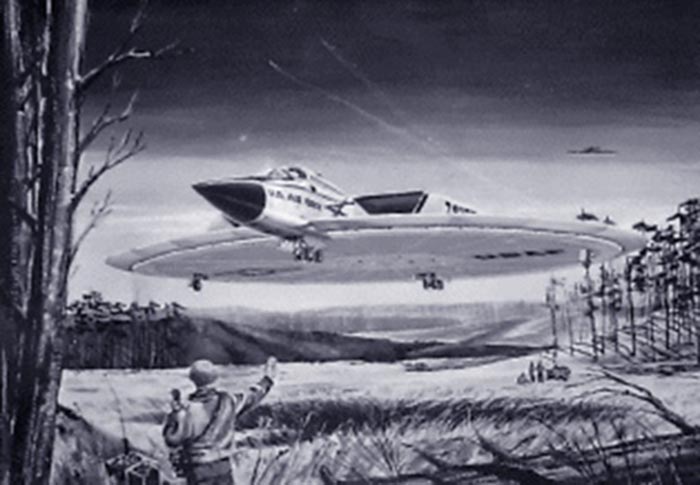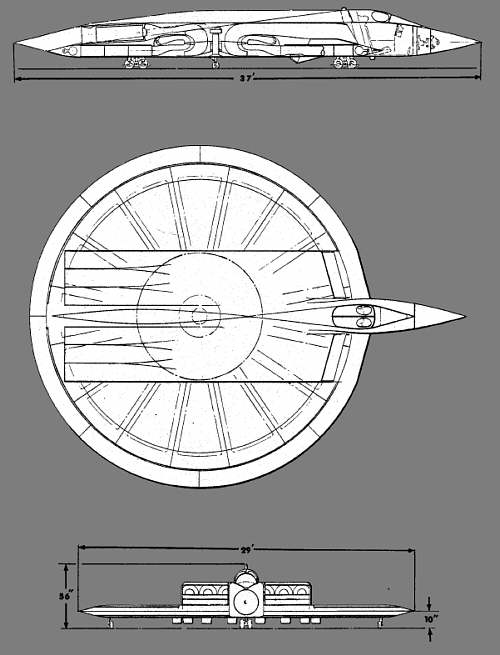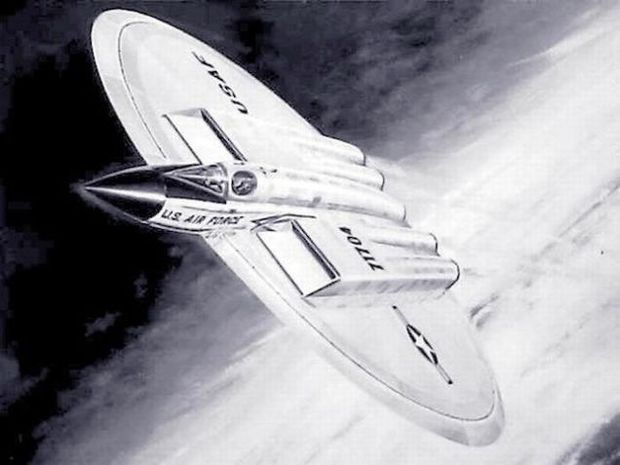
Hovering in a clearing, the WS-606A fighter-bomber prepares to land (USAF)
Weapon System 606A
In January 1959, Avro's Special Projects Group issued a report on the engineering specifics of the Mach 3, VTOL fighter-bomber version of the WS-606A design.
This iteration was roughly the size and weight of a modern Harrier. Its wing was about 29 feet in diameter, and overall fuselage length was 37 feet. Takeoff weight with 7,500 pounds of fuel was 20,000 pounds, and a 1,000 pound weapon load (described in one document as a Mk 28 tactical laydown nuclear bomb, which had a selectable yield of 350 kt to 1.3 Mt) could be carried to a target 600 miles from base at a speed of Mach 2.5. Propulsion was provided by a dual-mode engine which combined a radial-flow turbine, for takeoff and hover, with six Marquardt ramjets for supersonic cruise.
Vertical takeoff and landing was achieved by diverting the thrust of the radial impeller downward through a series of slots around the rim of the disc, forming a "curtain wall" effect. Multiple spoilers in the slots could vary the size of the orifices and divert the airflow in any desired direction. Forward flight was to be achieved by diverting the flow aft and accelerating to speeds where the ramjet engines would sustain combustion. In horizontal flight the fan flow was used for attitude control as well as thrust, and supersonic speed was to be achieved using ramjet power, but at the cost of high fuel consumption.
WS-606A fighter-bomber in high-altitude flight under ramjet power (USAF)

3-view drawing of fighter-bomber. Dashed line behind cockpit indicates enlarged fairing for special weapon (nuclear bomb) bay and additional fuel (USAF)
